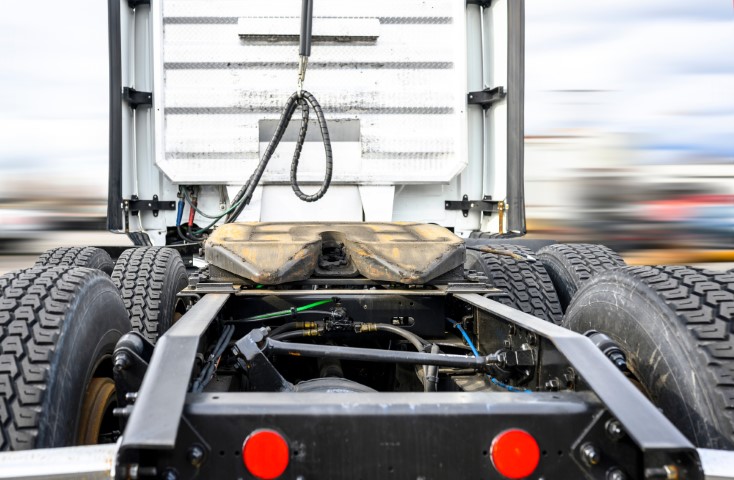 For hot shot truckers pulling heavy 5th wheel trailers, selecting the right hitch is crucial for safe, efficient hauling. The hitch serves as the critical link between your trailer and truck, supporting substantial weight while providing necessary maneuverability across different driving conditions.
For hot shot truckers pulling heavy 5th wheel trailers, selecting the right hitch is crucial for safe, efficient hauling. The hitch serves as the critical link between your trailer and truck, supporting substantial weight while providing necessary maneuverability across different driving conditions.
When choosing a 5th wheel hitch for your hot shot rig, consider these practical pointers to ensure optimal performance:
- Evaluate Weight Ratings
The hitch must be capable of handling the weight of your typical loads. Light-duty hitches can accommodate 15,000 to 20,000 lbs of gross trailer weight (GTW). On the other hand, hot shot applications involving heavy hauls require hitches rated for a minimum of 24,000 lbs or more.
Assessing the fully loaded weight of your largest trailer is essential to ensure this coupling mechanism can handle the load, protecting both your truck and cargo from potential damage. Exceeding weight ratings may lead to hitch failure and liability in the event of an accident.
Higher capacity hitches support heavier loads but come at a higher cost. It’s best to purchase a 5th wheel hitch that meets your current needs while allowing room for future growth.
- Consider Ride Quality
The type of hitch you choose significantly affects the ride quality. Traditional rigid hitches can transfer road shock directly to the truck, whereas cushioned hitches equipped with springs or hydraulic mechanisms mitigate this effect. This enhances comfort but also minimizes trailer sway and bounce, contributing to a smoother and safer ride.
When selecting a hitch, consider how its design influences the ride and handling of your vehicle and trailer combination.
- Evaluate Ease Of Attachment
For hot shot truckers who frequently change trailers, automated hitches are a practical choice. They provide quick and easy hook-ups, reducing physical effort with simple handle pulls or electric controls. This convenience is invaluable for those needing to switch trailers often and quickly.
On the other hand, manual hitches are more suitable for those who rarely change trailers. They require physical lifting and manual securing, which can be time-consuming but manageable for occasional swaps. If your operations don’t involve frequent trailer changes, a manual hitch could be a cost-effective option.
- Choose The Right Hitch Height
Proper height evenly distributes trailer weight and optimizes truck angle. If the hitch is too low, it can cause tail drag and handling issues. If it’s too high, it may lift the front axle.
Adjustable hitches allow tuning the height to match your truck and trailer, while fixed hitches limit compatibility options. Measure the loaded trailer and truck heights when hitched to calculate the ideal setting. Optimal height significantly improves control, steering, and braking.
- Confirm Truck Compatibility
Carefully match the hitch to your truck’s make and model. Most hitches are vehicle-specific designs that cradle the back of the truck bed. Before purchasing, confirm rail size, bolt patterns, and clearance.
Keep in mind that under-bed brackets may be necessary for proper mounting. Sliding hitches allow you to position the trailer closer or farther for weight distribution needs, but an incompatible hitch can damage your truck beds.
- Evaluate Mobility Features
A pivoting head allows the trailer to swing smoothly during tight turns. If you frequently maneuver through congested areas, seek a hitch with at least 15 degrees of lateral rotation.
Side-to-side tilt control keeps the trailer level on rough terrain, and manual or automatic sway dampening prevents fishtailing. This is especially useful in mountainous regions.
- Consider An Integrated Camera
Backing up to trailers can be tedious without visibility behind the truck. Modern hitches integrate a wireless camera within the hitch head. The camera feed displays on a dash monitor, making alignment easier.
Cameras are invaluable for solo operators, and some even assist with hooking up trailers using overlaid guides on the video. Upgrading to a camera-equipped hitch can simplify reverse maneuvering.
- Prioritize Durability
Hot shot applications demand an exceptionally sturdy hitch. Seek solid welded construction and thick steel for longevity. Hitch heads should have minimal wearable parts to withstand heavy hauling. Weather and corrosion-resistant finishes also extend the hitch’s lifespan.
Consider premium brands that engineer robust components. Remember, cutting corners on durability may jeopardize safe long-term hauling.
- Verify Security Features
Safety chains, locking mechanisms, and anti-theft devices help prevent detached trailers. Chains act as a safety net if the trailer breaks loose, while locks deter hitch theft.
Some hitches come with integrated locks and provisions for padlocks, and alarms can detect trailer disconnections. Using all available security provisions can guard against catastrophic separations.
- Consider Aftermarket Support
Even high-quality hitches require maintenance and parts replacement over time. Check the availability and cost of replacing common wear items like bushings and pins.
Opt for a major brand with comprehensive aftermarket support, as quick access to repair parts and technicians ensures uptime. Avoid obscure hitches lacking adequate support. In such cases, you may need to replace the entire unit.
Conclusion
Properly equipping your hot shot truck with a sturdy 5th wheel hitch tailored to your specific loads and terrain is vital for safe and efficient transportation. Consider weight ratings, features, durability, and maintenance support when making the right choice for your rig’s unique demands.










